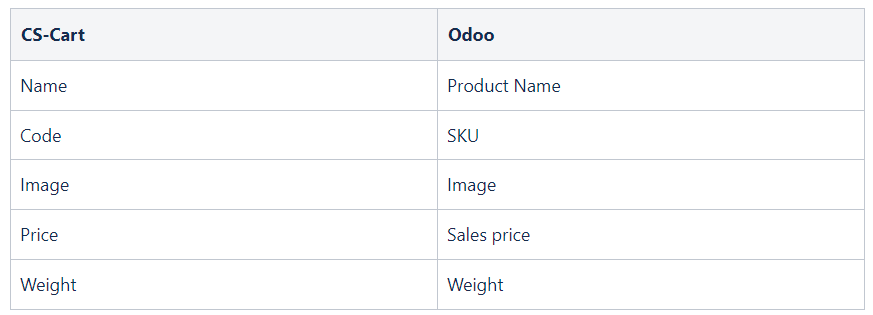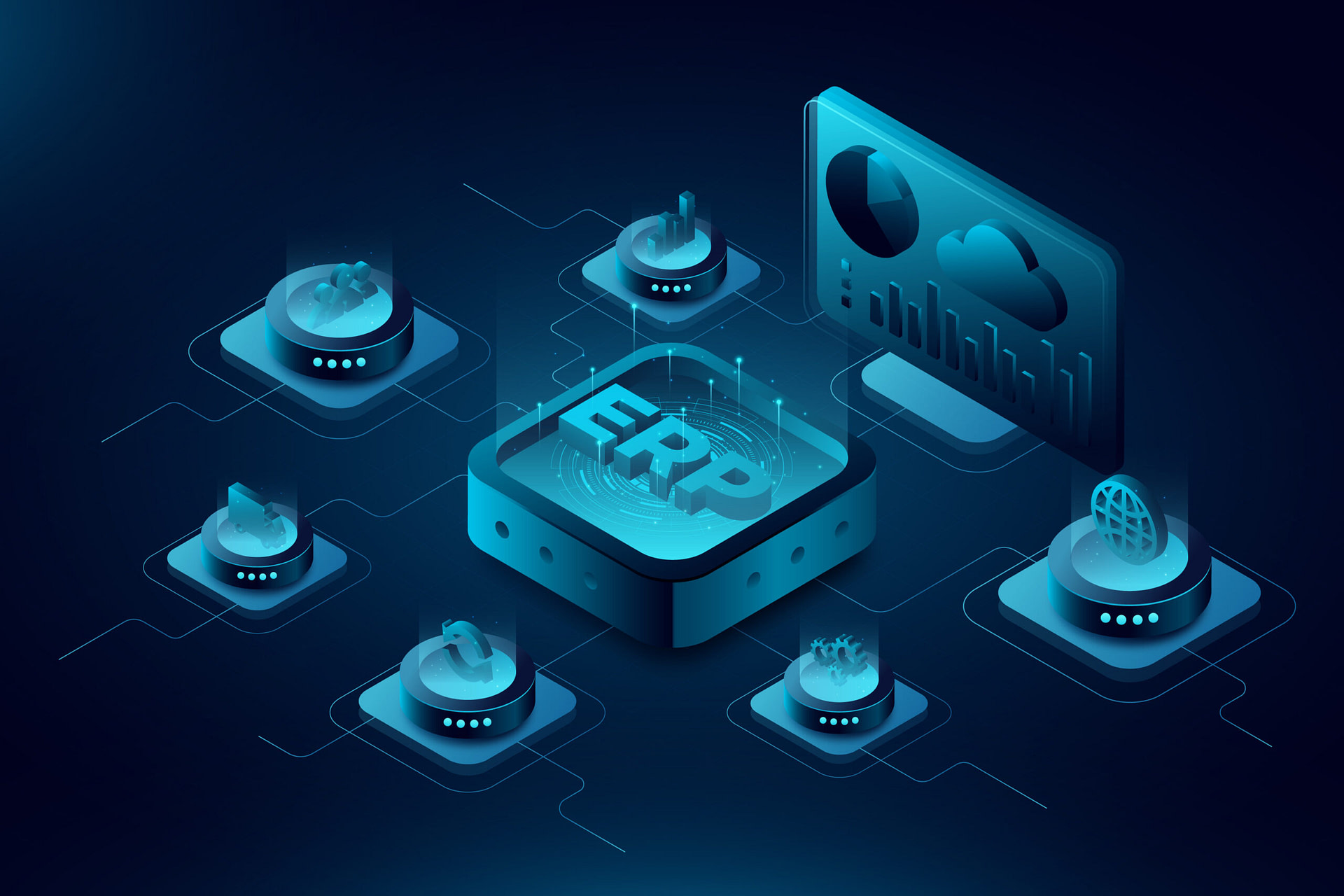ERP or Enterprise resource planning is the concept that relates to enterprise-level organizations. Large companies with lots of assets to be managed need a common system to get a full picture of what is going on in their businesses. However, connecting such a system can be challenging, expensive, and worthless. From this post you will learn how to get the most out of your eCommerce website integration with ERP. This ecommerce ERP integration is crucial for streamlining operations and maximizing efficiency in managing both online storefronts and backend processes.
2. ERP Integration is challenging as it entails large investments, can lead to data disclosure, rethinking of existing data organization, system upgrade, and necessity to adopt the new system for employees.
3. In return, with the ERP system integrated you get rid of manual inventory updates, data doubling mistakes, fragmented view of business processes.
What Is ERP System

ERP is business process management software that combines and manages finance, supply chain, warehouse, sales, analytics, production, and human resources of an organization. Software is responsible for automating and supporting the company’s operational and administrative processes.
How Is It Different From CRM
CRM and ERP systems are similar. ERP is required to track the production and logistics, while CRM’s purpose is to establish sales and increase customer confidence.
Types Of ERP Software
ERPs themselves can be divided into multiple types:
- By architecture: generalist, suite or modular:
- Generalist ERP is a wide-purpose system that provides many add-ons to fit a wide range of businesses. The advantage of such a system is that you acquire cutting-edge software to be further fine-tuned for the needs of your particular business.
- Modular ERP is a conglomerate of ERP components that you can choose to build the end system. A component-based architecture is a great choice for niche-specific industries but doesn’t suit large organizations.
- Suite is a set of apps united by the ERP purpose. Usually, this is nothing but a partnership among ERP software vendors. The key peculiarity of using suites is that you can benefit from specific solutions implemented as one piece of software instead of acquiring a full ERP system and then customizing it.
- By deployment: on premise, cloud, and hybrid:
- On premise ERP is installed on local servers and managed by the company itself. It better suits companies that need storing specific records and ensure strong data protection.
- With Cloud ERPs you entrust data security to a SaaS platform. They are usually cheaper and don’t force you to keep an IT department.
- Hybrid systems combine benefits of on-premise and cloud ERPs. If a locally-based part of ERP needs to be replaced, you can do it with a cloud-based piece of software.
What type of ERP to choose depends on your goals and budget. We recommend hybrid systems for better scalability. So when you will need to enhance your business productivity with ERP, you will be able to connect a part or the full ERP system to your eCommerce website. This is what we call ERP eCommerce integration. Let’s cover the integration concept in more detail.
What Is An ERP eCommerce Integration?
Simply put, it is the coordination of the connected entities between your site and the ERP system to enable a proper ERP connection, data flow, and timely syncing of all processes. You enter data once in one system, and it is available in both pieces of software thanks to synchronization.
Ecommerce ERP Integration: What Systems To Integrate?
There are plenty of ERPs on the market nowadays. What to choose? We’ve selected the most commonly used and valuable platforms you can consider:
- Odoo: The software is designed for large companies to assist in managing databases of customers, organizing customer care and relationships, resolving HR tasks, and accounting functions. When considering this platform, it’s also important to evaluate the cost of Odoo implementation, as it can vary depending on the company’s size and customization needs.
- Anchor: cost of Odoo implementation
- SAP: It is a cloud-based modular ERP with AI and analytics tools. The system perfectly automates operations in real time and provides business-specific insights.
- NetSuite provides ERP management capabilities to meet the needs of finance, HR, sales, operations, and service departments. This application offers many benefits, including increased employee productivity through cross-departmental systems integration and software automation. It provides real-time data transparency for smarter decision-making, which a guide to NetSuite pricing can help you work out the cost-effectiveness of.
- Brightpearl: The software suits both retail and wholesale businesses and involves tools to manage inventory, sales, and accounting. It automates workflows and has an in-built CRM system helping you to view all customer details, order history. It can be connected to Slack to ease in-team communication and accelerate task performance.
- Dynamics 365. It helps with lead tracking, process automation and business process acceleration, and is available for mobile and desktop apps. For businesses using Microsoft’s ecosystem, Dynamics 365 integration can further streamline operations by connecting ERP and eCommerce systems into a unified workflow.
- Microsoft Dynamics: This software fuses CRM and ERP capabilities together. Furthermore, it offers productivity apps and AI tools.
- E2 Shop System: The ERP system is primarily designed for manufacturing companies and shops. It helps significantly with accounting and resource estimation, customer management and analytics.
- Workday: A cloud system helping major enterprises in organizing and maintaining HR, finance, and accounting operations.
- ERPAG Software: It suits small and mid-sized firms operating in different industries. B2B companies benefit from software thanks to helpful inventory management, inbuilt analytics and reporting tools, and shipping control.
How ERP Integrated Ecommerce Results In Better CX
Connecting an ERP for eCommerce to your site may result in improving not only internal flows of your organization but affect the overall business including customer experience (CX). Here are some benefits in terms of CX:
- Improved order placing process. ERPs automate the order placement process helping to calculate shipping costs or produce a shipping label. Automation keeps your business away from human errors and makes your company’s business approach more professional.
- Better customer communication. Automatic messages are sent to buyers upon the onset of a particular event: purchased items were received, the order was shipped or delayed for some reason. When the customers are kept informed, it is more likely they are loyal to your brand.
- Simplified changes. With an ERP system in place, you can alter prices or make other amendments on site more easily and error-free. The software will take care about all dependencies to ensure the changes are applied everywhere it is required.
- Real-time inventory information: Integrated ERP solutions immediately apply changes in inventory once an item was bought or amended in some form. Customers are provided with only up-to-date data and are prevented from ordering an item out of stock.
- Greater personalization. ERP helps in getting a deeper understanding of customer interests or preferences. With this knowledge, businesses can build smarter marketing campaigns and meet their audience needs more accurately.
Why B2B Companies Prefer ERP-Integrated Ecommerce
B2B eCommerce ERP integration enables businesses to automate the flow of data between these systems, so all information is accurate, up-to-date, and available to different departments. Some B2B organizations having difficulties with keeping unique prices and managing big counts of SKUs or thousands of employees, integrate an ERP system to facilitate management of this data.
This ERP marketplace integration streamlines processes, enhances data accuracy, and promotes seamless communication between the eCommerce platform and the ERP system, ultimately improving overall business productivity and decision-making.
How It Works
ERP is the software capable of interconnecting processes within an organization: be it manufacturing, supply, procurement, sales, accounting or human resources. It organizes them into a single flow working as a clock and allows its scaling when required.
ERP software for eCommerce cannot be used once you buy it. First, you incorporate your specific company business goals and structures. Data needs to be brought together to build a common logic.
To explain how the integration works, take an example of an eCommerce site that needs an ERP for automating order fulfillment. Let’s say, you choose Odoo to automate order placing in your CS-Cart site. The essence of ERP connection is to synchronize the work of the relative entities in ERP and CS-Cart.
- Decide what should be transferred from ERP to CS-Cart and vice versa. Here is a tentative list of what can be transferred between systems to build a centralized system with ERP integration:
- Order details
- Customer information
- Shipping data
- Accounting
- Product and pricing
- Inventory
- Create a new entity if missing. If a customer has registered in the eCommerce store, you will need to create the same user in ERP to enable data exchange.
- Map entities and sync the details (about customers or orders, for example) between the two systems. A mapping table is created so that two systems could understand each other while communicating.

4. Select synchronization mode. Synchronization can be done on a schedule or in real-time. Once mapped and synced, the entities can be exchanged and the data flows can be tuned.
To set up connections without mistakes, it is better to hire expert integrators. Our company has a vast experience in ERP system integration, so you can consider entrusting this work to our devs.
Common ERP Integration Challenges And Risks
To get the most out of integration, weigh first pros and cons as the outcome will depend on what business an ERP system is integrated into. Take a look at these common challenges encountered when connecting an ERP.
Large Investments
ERP integration may go beyond the initial budget. Why? When connecting two systems, it is often required to make modifications in both of them to tune a seamless flow of data. Finally, when all processes are set, you’ll have an intelligent system that will help you save money and grow your business. According to HubSpot, ROI of ERP implementation increased. Companies saved 40% on the IT department, 38% on inventory costs, 35% on cycle time.
Disclosure Of Sensitive Data
Connection of any component is a weak spot in the chain. Often, it is the place targeted by hackers. You may lose client data or proprietary information when transferring data between two systems. Hopefully, this point can be closed with a proper hosting solution. Your hosting provider should ensure protection, so you can safely exchange data.
Adoption
Learning how to work with a new system can be painful for employees. In our practice, a B2B business even refused the marketplace model in favor of the online store to keep vendors on the platform.
Data Handling
Before starting the integration process, make sure your present eCommerce site or the chosen ERP system is capable of processing the data flow requirements. There shouldn’t be any bottlenecks in the data flow to keep exchanging smoothly and fast.
Abundance of Data Types
Needless to say, the more data types you have, the longer the integration. Consider simplification of what is going to be integrated to streamline data flows.
Benefits Of ERP Ecommerce Integration
Nobody integrated an ERP system if it was not beneficial. Regardless of possible obstacles before integration path, organization can reap the following benefits:
Inventory updates
Without ERP in place, you would have to manually update inventory in your ERP system and eCommerce site. With extensive product counts and increased volume of orders, this process becomes labor-consuming. Another good thing about eCommerce integration with ERP is the ability to scale. You can modify the software to fit the required scale of operations without connecting siloed solutions requiring many connections and slowing down the entire system.
Centralized Hub For Supply, Sales and Procurement
Another aspect to consider is that with ERP software integration, you streamline the management of supply, sales, customer relationships, or payment information. As a result, you achieve a centralized solution where there is a consistent picture of your business’ actual state. This integration is critical for enterprise-level organizations that suffer from fragmented approaches towards business processes.
Less Mistakes
With ERP integrated, you get a platform where all data flows are centralized: no need to enter data twice doubling mistakes or look up in different sources for a specific order or report. It saves your time and efforts and frees them for making business decisions.
Automation
Centralization of all processes is key, but automation is also important. When processes are automated you can scale innovations at any time easily. ERP helps bridge business and functional silos, but automation helps scale innovation. When combined with technologies such as AI and cloud, ERP offers nearly limitless possibilities for improving business processes.
Our Cases With ERP Integration
We have a rich practice of integration ERP systems and can share some real cases with challenges and solutions offered to our clients.
Case #1

Once integrating an ERP even changed the business model of the launched project. That was the case with a Garden Equipment shop. Before they came to us, there was no online platform in place to sell products on the web. When our analysts studied the requirements, they naturally offered the marketplace model. However, the resistance of vendors to study a new system was so high that we decided to base the project on the online store platform instead of the marketplace. Vendors were kept working in their regular ERP systems and all their data was seamlessly synchronized with the CS-Cart online store in such a way that CS-Cart became an all-in-one solution to collect data from multiple sources.
Case #2

Another example is our own Helpdesk system. It was required to unite data across the entire company and interlink it to get a centralized hub of all enterprise-level assets. The process was challenging due to its long-lasting history, needing to connect many sources and apply multiple technologies within one system. But we overcame all the difficulties, and now benefit from a really worthwhile platform that saves our efforts and time on handling lots of company-specific information.
Case #3
When connecting Linnworks ERP to the British Grocery Store, we faced the necessity to study thoroughly the connected system and map all data exchanged between two systems to get an interrupted flow of data. Finally, we did it and the store now benefits from a bird’s eye view approach while deciding on their activities.
Best Practices Of ERP Integration In eCommerce
Now we can expertly state that while taking the decision of integrating an ERP, you should envisage applying the following recommendations.
Invite Stakeholders
Integration is the matter of the entire company. It is critical to understand the needs of the involved staff. Involve any affected specialist in requirement collection for future integration: dealers, accountants, sales reps, IT specialists or a legal dept officer.
Draft An Accurate Plan Before Starting
Integration is like orchestration: every instrument should play its part to make the tune pleasing to the ear. Make sure you have planned every stage and know the expected output at every point of the integration.
Declutter Data
Ensure there is no data duplication to save efforts. Clean up redundant data.
Conclusion
An ERP system in place is a must-have for large organizations. For medium-size companies, it will add more comfort and greater productivity with streamlined processes. However, the benefits of integration will see only those who integrated it seamlessly into existing business processes. If done incorrectly, it will only cause troubles to both business and its clients. That’s why we recommend order integration from contractors who are experts in it. You can trust our 17+ years experience in eCommerce development. Our staff includes business and system analysts helping you to understand whether you need eCommerce ERP integration and how better to implement it.
FAQ
What is ERP integration?
This refers to the process of integrating an Enterprise Resource Planning (ERP) system with other software systems in an organization to facilitate seamless flow of data.
What are some benefits of ERP integration?
– Improved data accuracy and consistency
– Improved productivity and efficiency
– Better decision-making
– Reduced costs
What are some challenges of ERP integration?
– Complexity
– Cost
– Compatibility issues
– Security risks
What are some factors to consider when choosing an ERP integration solution?
ERP plays a vital role in electronic commerce as it helps businesses to automate and streamline their end-to-end processes such as order management, inventory control, shipping, accounting, and customer service.
With the integration of ERP, eCommerce businesses can have a 360-degree view of their business processes, and they can easily track, manage and analyze their data, which can help them to make data-driven decisions and optimize their operations. This leads to increased efficiency, reduced operational costs, improved customer service, and ultimately a better bottom line.
In summary, the role of ERP in eCommerce is to provide an integrated platform that streamlines and automates business processes, improves visibility, and enables online businesses to make informed decisions based on real-time data.

